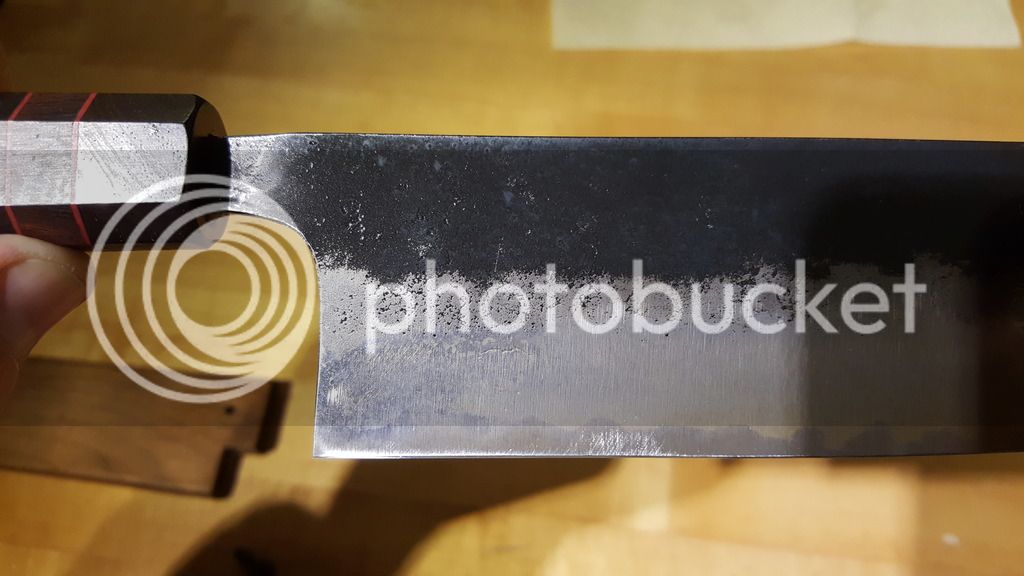Casaluz
Senior Member
From time to time I see postings regarding advice about Nakiris and dialog back and forth about the use or even the wisdom of getting one. My first Japanese knife was given to me almost two decades ago. It was a nakiri, although at that time I had no clue what it was, how to sharpen it or use it. It was beautiful and I admired it since I knew its story and provenance from a master blacksmith in Japan. For the longest time I did not really know how to use it and it ended well kept in storage for years. When I finally begun to learn about Japanese knives I took it out again and re-appreciated what it was and eventually I gave it as a present for a close friend in Spain who uses it very often.
After experimenting with other Japanese knives and understand more I became curious about tracking the maker of a knife and came across the name of Murray Carter in this forum. Understanding what it is to train in a Japanese art for years I decided to purchase one of his knives and at that time there were not many knives available but luckily for me I saw one being posted for sale in his website and I jumped to the opportunity. It was a 5.2 sun Kuro-uchi Nakiri, White Steel core laminated with Gokunan-tetsu 159 mm, 160 grams, with an Ironwood/Cocobolo handle. To me it is beautiful. It is well balanced and it feels significant in my hand. I purchased it at the end of 2014 and more than a year later I use it a few times a week and it is one of my default knives that I pick most often. It glides through vegetables and although it has a very good edge retention, I really like the way it feels and sharpens in my stones. When I was learning, my friend chinacats guided me through many aspects of this peculiar hobby and its community. He told me to try different knives and steels to learn what I liked. So far, Hitachi white steel is my favorite steel to sharpen. I find it easy to do to an edge that makes me feel proud even with my novice skills.
Reading about how some cooks learn to love chinese cleavers and some of them having different uses, I imagine that the very thin ones for vegetables might be larger versions of my nakiri although I confess that I am happier with the smaller, nimble size I have, So here are a few pictures for those of you curious about Nakiris or Carter knives. I love this one so much that eventually I added a few more Carters to my set. I absolutely love them all.
If you are inclined to do so I would be very curious to read and see your thoughts on Nakiris in general, yours in particular or pictures you would like to add too this thread.
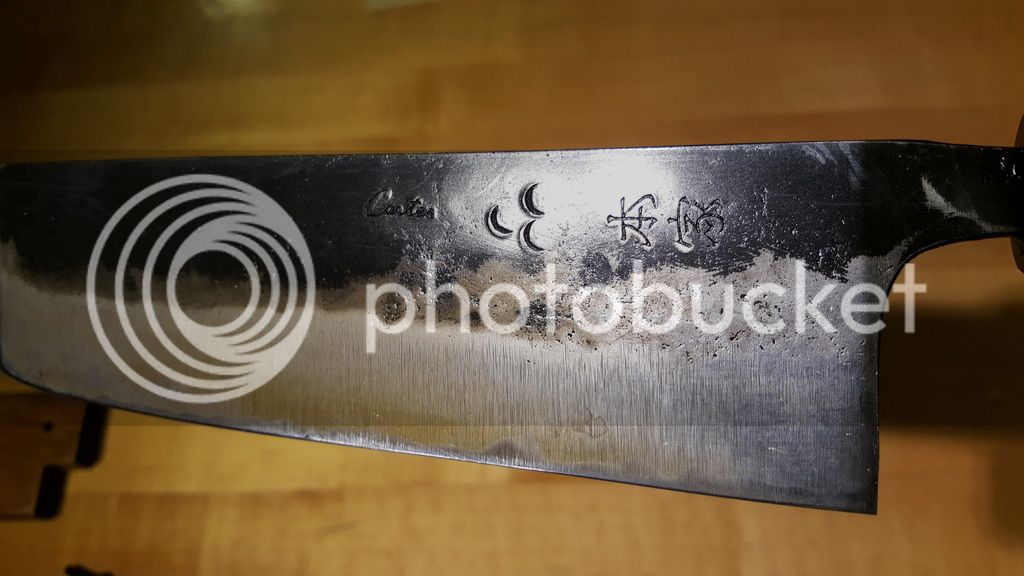
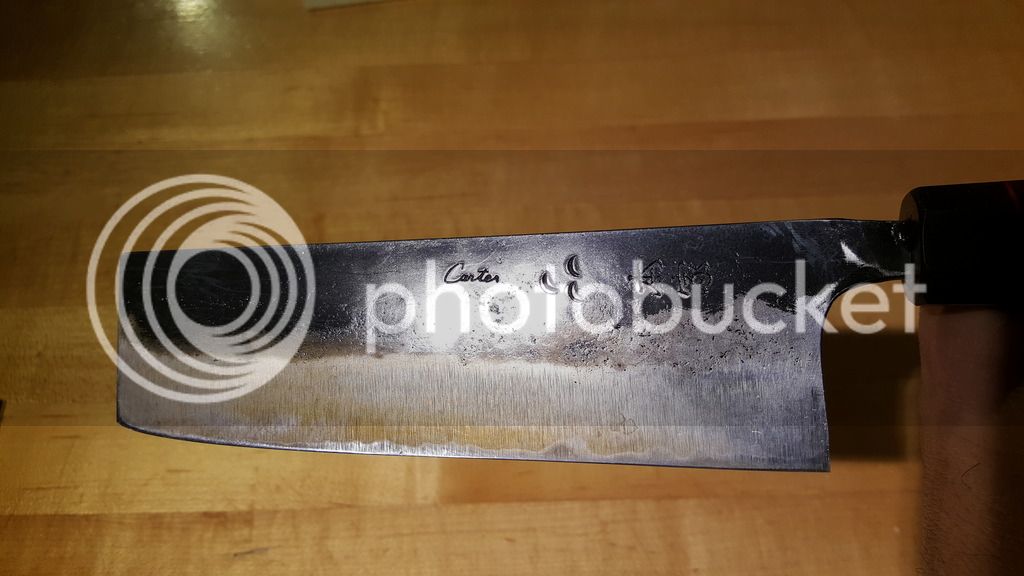
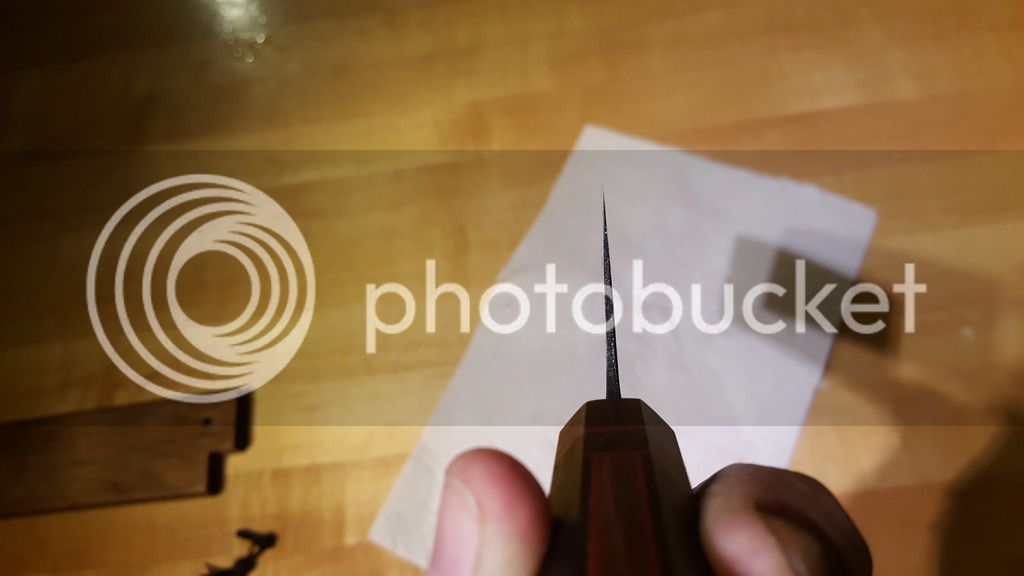
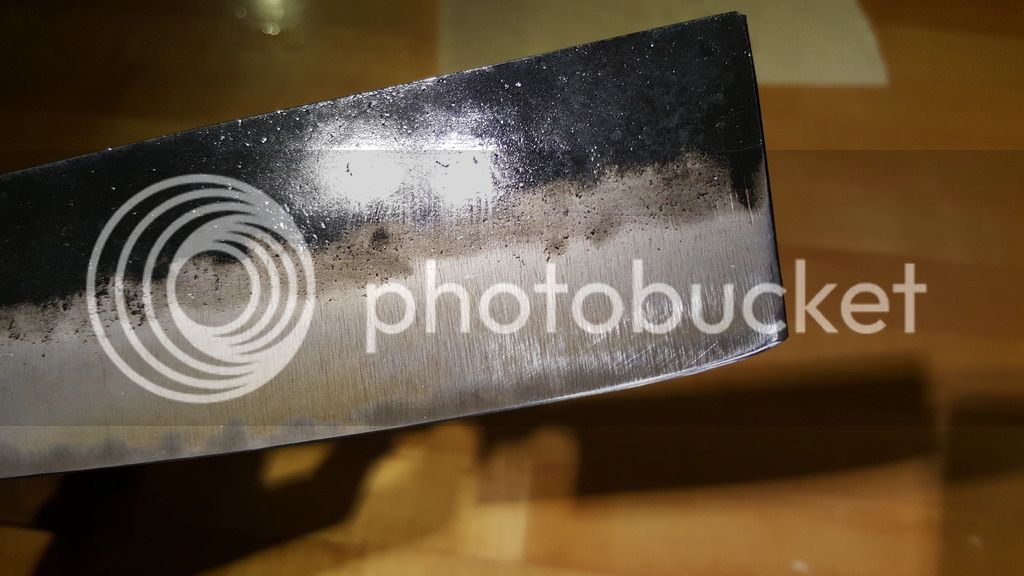
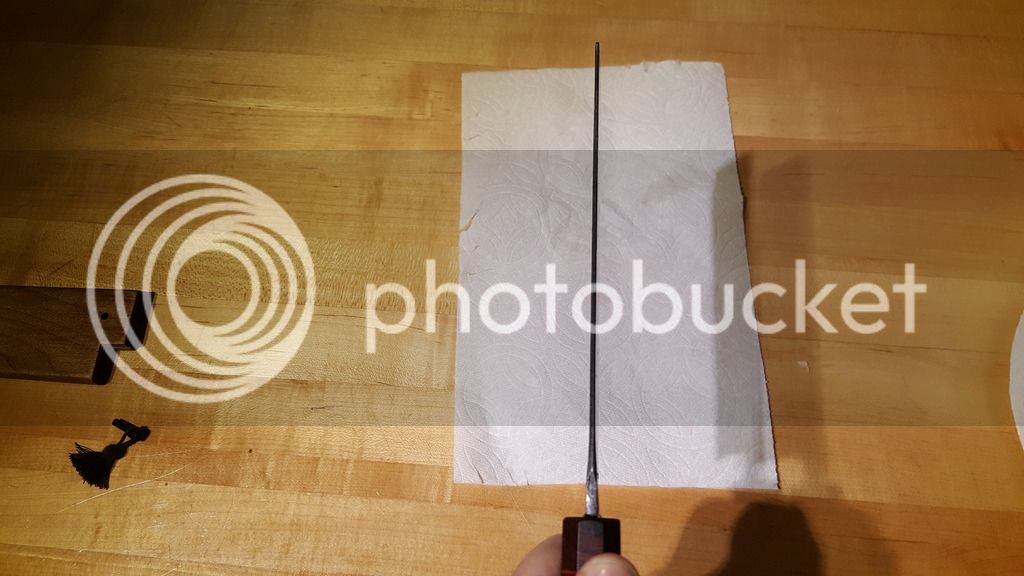
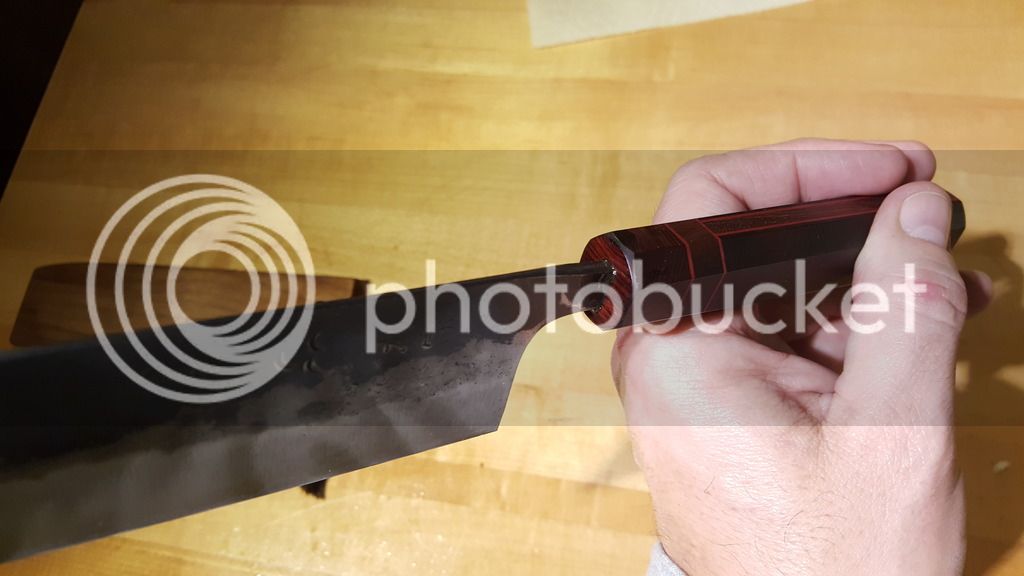
After experimenting with other Japanese knives and understand more I became curious about tracking the maker of a knife and came across the name of Murray Carter in this forum. Understanding what it is to train in a Japanese art for years I decided to purchase one of his knives and at that time there were not many knives available but luckily for me I saw one being posted for sale in his website and I jumped to the opportunity. It was a 5.2 sun Kuro-uchi Nakiri, White Steel core laminated with Gokunan-tetsu 159 mm, 160 grams, with an Ironwood/Cocobolo handle. To me it is beautiful. It is well balanced and it feels significant in my hand. I purchased it at the end of 2014 and more than a year later I use it a few times a week and it is one of my default knives that I pick most often. It glides through vegetables and although it has a very good edge retention, I really like the way it feels and sharpens in my stones. When I was learning, my friend chinacats guided me through many aspects of this peculiar hobby and its community. He told me to try different knives and steels to learn what I liked. So far, Hitachi white steel is my favorite steel to sharpen. I find it easy to do to an edge that makes me feel proud even with my novice skills.
Reading about how some cooks learn to love chinese cleavers and some of them having different uses, I imagine that the very thin ones for vegetables might be larger versions of my nakiri although I confess that I am happier with the smaller, nimble size I have, So here are a few pictures for those of you curious about Nakiris or Carter knives. I love this one so much that eventually I added a few more Carters to my set. I absolutely love them all.
If you are inclined to do so I would be very curious to read and see your thoughts on Nakiris in general, yours in particular or pictures you would like to add too this thread.











